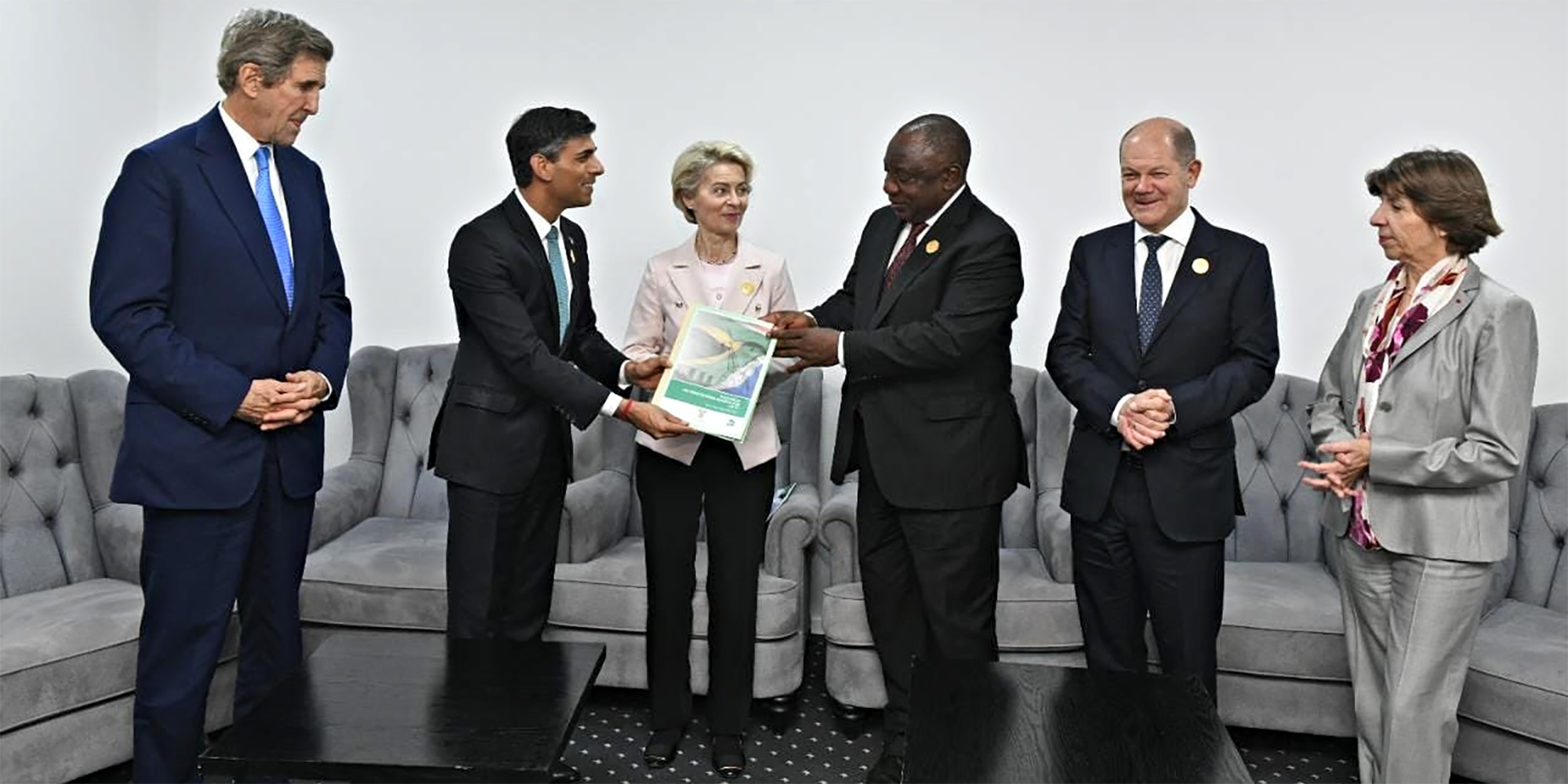Writing in Foreign Policy magazine, Nicholas Kumleben, a senior analyst at GreenMantle, said the deal is the first of its kind for three key reasons.
“First, the South African government largely designed the bespoke program, which will enable it to account for local conditions on its own terms. Second, it represents a well-funded partnership among a small number of actors, creating greater accountability than is possible in a vague global or regional agreement. Third, the deal provides funding for a ‘just transition’ at the local level in addition to the early retirement of coal plants, helping to cushion the blow of local deindustrialization in a developing economy. All three of these details imply that it is more likely to succeed than past climate agreements.”
After the deal was announced it was immediately saluted by the leaders of Germany and the EU, among others. So hat tip to Minister of Environment Barbara Creecy and the National Development Plan team for putting together a comprehensive 200-page report.
Where the report is strongest, I suspect, is in breaking down exactly what will be needed in a modestly granular way for SA to reach the global target of keeping the global temperature increase to 1.5oC above 19th-century levels. The plan includes three things: first, the obvious, transitioning from coal and closing down SA’s old coal plants; second, boosting the electric mobility sector, and third, developing green hydrogen and other renewables.
Right. So far so good. One does not have to be too cynical to note however that the idea and the agreement sit in SA’s happy space: wheedling money out of (somewhat) guilty Europeans and drawing up extended and complicated plans. SA’s unhappy place is putting these plans into practice.
This is going to be especially tricky because, like all of SA’s grand plans, the costs are accounted for, but where the money will come from is not. Government has pegged the total cost of the plan at around R1.5-trillion. The international group — the United States, Britain, France, Germany and the European Union — have coughed up $8.5-billion, which is R146-billion, or less than a 10th of the total bill. And most of that comes in the form of concessional loans — not great, but not to be sneezed at, by the way. There is a tiny grant portion. That leaves an almighty hole in the plan.
Visit Daily Maverick’s home page for more news, analysis and investigations
The argument of the developing world, which SA has signed on to with gusto, is that the developed world industrialised on the back of CO2-emitting power sources, so to restrict the developing world from doing the same would be unjust. So the developed world should pay, or at least help pay, for the transition.
I know lots of people think this is unimpeachable, but I’m sorry, I think it’s complete bunk. Of course, it’s true that the developed world industrialised off coal and other non-renewables. But if the developing world wants the developed world to pay for the damage it created, does that mean the developing world should pay the developed world for everything positive that developed nations have invented in history from modern pharmaceuticals to the internet to the electric razor? And the idea would have more validity if the all-in cost of renewable energy was massively more expensive than energy from coal, but it turns out it is not.
One other thing, and in fact, SA is a fabulous example here. SA, of course, developed to the extent that it has on the back of coal-fired power plants, like much of the developed world. Yet, SA’s new democratic government did have a choice about what kind of energy future it wanted, and what it plumbed for was more coal.
It did so because at the time, in the late 2010s, the most influential voices in energy insisted that only coal could provide “baseload” power. And hence, the disastrous plan to build Kusile and Medupi unfolded. In some ways, it was a completely understandable decision: SA has an abundant supply of cheap coal and Eskom was familiar with coal-fired power stations. But this decision, and the disastrous execution of the build programme, cannot be laid at the door of some philosophical “you owe us” political fantasy. SA is now the 12th-largest emitter of carbon, and the developed world is largely not responsible for that.
Still, SA has changed tack somewhat. The Renewable Energy Independent Power Producer Procurement Programme (REIPPP), which began way back in 2011, has so far procured 6,422MW of renewable electricity capacity in 10 years through four bid windows. Two more are in progress.
But niggles aside, you do get a sense there is a track being laid out here, and as first steps go, not too many potholes. BM/DM
Africa
Good COP, Bad COP — two sides to SA’s just transition investment plan





